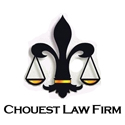Jefferson Parish History
From the early 16th century, European explorers recognized the strategic and economic potential of the lower reaches of the Mississippi River. Fertile soil and easy access to the Mississippi River and Gulf of Mexico fostered the development of the area. The first Frenchman to explore the lower Mississippi was Rene Robert Cavalier, Sieur de La Salle, who passed by New Orleans' site in April 1682 on a float down the Mississippi from Canada. De La Salle claimed the entire river basin from the Appalachians to the Rockies for France, naming the area Louisiana in honor of Louis XIV and his Austrian bride Queen Anne. In 1718 Jean Baptiste La Moyne, Sieur de Bienville, established New Orleans as the capital of Louisiana and a fortress to control the North American interior.
The French were not inclined to adequately populate the Louisiana Territory during the 1700's. The French/Bourbon government preferred to populate the area with conservative Catholic settlers. However, conservative Catholic Frenchmen preferred to remain in France with their friends, businesses and relatives over the relative lack of sophistication of the new French Territory. Many rural Acadians ("Cajuns") settled the countryside around New Orleans in the 1760's, after being hounded out of Canada.
In 1762 France transferred the Louisiana Territory to Spain for the next thirty eight years. In 1800 Napoleon Bonaparte reclaimed the vast Louisiana Territory for France as part of his plan to develop a great new French empire in the New World. Three years later, facing war with Great Britain and needing troops and resources to support his military needs in Europe, Napoleon offered to sell the vast Louisiana Territory to the United States. President Thomas Jefferson jumped at the opportunity and signed the Louisiana Purchase, even though the Laws and Constitution of the United States did not authorize the federal government to acquire new territories by treaty at the time. Thomas Jefferson determined that the practical benefit to the country was worth the risk of acting without legal authority. The U. S. Senate subsequently confirmed the acquisition on Oct. 20, 1803.
French and Spanish land grants made during the colonial period set the pattern for development in what was later to become the Greater New Orleans area, including Jefferson Parish. Roman Catholic is still the predominant religion. Great Louisiana Cajun names like "Jefferson Chouest" (my dad) are properly pronounced. Many areas of Louisiana law are still based upon the "civil" law and the French Civil Code of 1804 (the Code Napoleon) rather than the English "common law" used in the other 49 states. The French and Spanish heritage is also the basis for the division of the State of Louisiana into "parishes" as governmental units rather than "counties" as used in all other parts of the country.
Jefferson and Orleans Parishes are both physically separated by the Mississippi River. The eastern portions, including the City of New Orleans, are referred to as the East Bank and the western portions are called the West Bank . Jefferson Parish originally extended from present day Felicity Street in New Orleans, Louisiana, to the St. Charles Parish line. As Orleans Parish grew, it annexed from Jefferson Parish such established areas as the Garden District, Lafayette, and Carrolton. Jefferson Parish's present boundaries were established in 1874, and the seat of Parish government was transferred to the West Bank, Gretna.
Once a largely rural area of farms, dairies and vast tracts of undeveloped land, Jefferson Parish today is New Orleans' first suburb - a bedroom community west of the city that received the first great migration of middle-class families from the 1950's to the 1970's.
Jefferson Parish's largest community is Metairie, an unincorporated area that comprises almost all of East Jefferson. Smaller unincorporated areas include River Ridge and Jefferson. East Jefferson cities include Kenner and Harahan. The cities of Gretna and Westwego are in West Jefferson.


